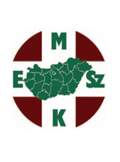The eLitMed.hu medical portal uses computer cookies for convenient operation. Detailed information can be found in the Cookie-policy.
Journal of Nursing Theory and Practice - 2013;26(03)
Content
[Attitudes to careers and the future among students at Semmelweis University]
[Aim of the study: The authors studied the attitudes, regarding the future, of female students who had chosen a paramedical vocation. In the course of their work they assessed the students’ vision of the future, and obtained a detailed knowledge of their family and career plans, and the correlations between them. Methodology and sample: The quantitative sociological survey, based on a self-completion questionnaire, was conducted among 2nd, 3rd and 4th year student nurses, student midwifes and student health visitors at the Semmelweis University Faculty of Health Sciences. The results were analysed with the SPSS 19.0 program, using a descriptive statistical method. The proportion of useful responses to the questionnaire was 94.1% (N=257). Results: The students clearly prefer motherhood, but their vision of the future is uncertain. Achieving new and higher professional targets was considered important by 29.2% of the sample, and going to practice their studied profession by 54.5%. With regard to career plans, the authors found a statistically provable difference between the specialisations (p<0.001). Of the nursing students who responded, 82.6% wanted to attain middle-management status by the age of 40, while only 8.7% would also be happy to work as general staff. Conclusions: The female students at Semmelweis University are preparing both to have children and to practice their paramedical vocation. The responses given regarding their vision of the future could show that the reconciliation of these two future roles is already causing uncertainty. A higher proportion of the respondents would like to achieve middle-management status, which represents greater prestige for them. A positive shift in their vision of the future could help prevent career abandonment and emigration. ]
[Nurses education project management tools to help introduce the practice of the administration of parenteral incretin mimetics]
[Aim of the study: The goal of the authors was to further educate diabetes health care professionals and keep their knowledge up to date during the explosive development of diabetes science. The team members should be competent to administer modern therapies adapted to the patients’ satisfaction in order to improve the quality of life of the patients. Materials and methods: Diabetes education nurses team members were professionally educated in the administration of liraglutide therapy at Uzsoki Hospital, II. Department of Internal Medicine (N=20). The introduction of the new therapeutic steps of this treatment was carried out using project management techniques. The effectiveness of knowledge-education placement tests conducted by comparing. Results: After the introduction of planning and execution, it was found that the professionals mastered the education of liraglutide therapy. Included in the scope of the project, besides the educational training of the team was the introduction of the treatment stages in liraglutide therapy. In order to assess the level of the knowledge acquired among the team members, survey questions were evaluated. According to the results, it can be stated that trained team members learned the new skills in the field of educational modification. Conclusions: The most important question of patient management quality care is whether the patient is able to optimally manage his/her life independently. The continuous presence of an educator team - which is up to date in the rapid development of the clinical science of diabetology - is essential in the achievement of this goal. The supervisor of the department is responsible for the ongoing training and monitoring of educator nurses. ]
1.
Clinical Neuroscience
[Headache registry in Szeged: Experiences regarding to migraine patients]2.
Clinical Neuroscience
[The new target population of stroke awareness campaign: Kindergarten students ]3.
Clinical Neuroscience
Is there any difference in mortality rates of atrial fibrillation detected before or after ischemic stroke?4.
Clinical Neuroscience
Factors influencing the level of stigma in Parkinson’s disease in western Turkey5.
Clinical Neuroscience
[The effects of demographic and clinical factors on the severity of poststroke aphasia]1.
2.
3.
4.
5.





